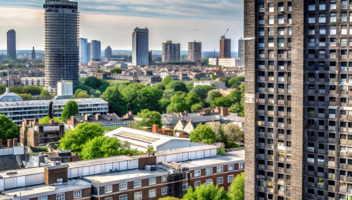Building safety reform has one objective: saving lives.
However, the UK and Scottish Governments are travelling along different routes to this destination.
The consequence is that whether you are a developer, house builder, contractor or consultant, you will need to understand and follow the correct route map and, if you work across the UK, you are definitely going to need two separate ones.
English building safety developments
The UK Government seeks “lasting generational change” with its Building Safety Bill.
The changes proposed are, quite simply, massive. They will impact every single aspect of a development.
To select a few examples:
- a new, all powerful, Building Safety Regulator;
- changes to building control authorities and regulations;
- a new, and stringent, higher risk building regime (for buildings at least 18 metres or 7 storeys) including a developer levy that must be paid before construction begins;
- remediation and redress implied terms in leases and 15 years to pursue claims; and
- a New Homes Ombudsmen.
The Impact Assessment factsheet assesses the cost to the industry. The annual recurring costs are estimated at £426 million and it appears that the majority of these costs will fall on the private sector. This does not include the transitional costs of setting up these new regimes.
While the Building Safety Bill is a UK-wide piece of legislation, the majority of the significant changes apply only to England.
However, the Bill cannot be discounted in Scotland as a limited range of changes will apply there too e.g. the power to make regulations for the marketing and supply of construction products; increased competency requirements for architects; and amendments to the Health & Safety at Work Act 1974.
Scottish building safety developments
In contrast, the Scottish Government has taken a more targeted approach to addressing the issues.
It has reviewed existing legislation and regulations and, where required, these have been updated and gaps are being filled.
The most recent developments, in the last couple of months, include:
- July: the publication of Building standards (fire safety) - external wall systems: consultation. This consultation seeks views on a ban of the highest risk cladding materials on new buildings and to give further consideration to façade system testing. Any changes will be introduced through amendments to building regulations and supporting guidance in the technical handbooks. The consultation closes on 8 October 2021;
- August: 25 buildings were selected to kick off the cladding assessment programme. Single Building Assessments are expected to largely supersede the use of the EWS1 forms in Scotland but it is not clear how this will be viewed by lenders; and
- August: the publication of the Scottish Advice Note: Determining the fire risk posed by external wall systems in existing multi-storey residential buildings.
Part 1 (General Advice) will be of particular interest to those with responsibility for fire safety, such as building owners (including individual flat owners in privately owned/mixed tenure blocks of domestic flats), employers, building managers and others. Part 2 (Technical Advice) will be of particular interest to those who undertake fire safety risk assessments and appraisals.
NOTE: This Advice Note applies to existing multi-storey residential premises of two or more storeys (including residential premises contained within "mixed use" buildings) eg. blocks of domestic flats; student accommodation; hospitals; care homes; hotels and prisons.
How can you best navigate the new building safety landscape?
To continue the driving analogy, you will need…
- two route maps if you operate or advise across the UK. Different regimes require different internal management and processes. Two key examples of the differences are: (a) the Building Safety Regulator would have no role in Scotland; and (b) the developer levy would not be payable in Scotland. Such significant distinctions may influence investment decisions in Scotland;
- a clear rear view mirror to assess exposure to historic claims. The law on time bar is fundamentally different between Scotland and England. The Building Safety Bill, as currently drafted, will increase the time bar period for claims relating to a dwelling to 15 years in England (and this change will apply retrospectively). In Scotland, claims are time barred after 5 years so those with claims to pursue will have a significantly shorter period of time to do so; and
- a very large windscreen to see the road ahead which is chock a block with legal and technical reform from both the UK and the Scottish Governments.
If you have any questions about how the proposed reforms will impact your business, or your properties (existing or proposed), please contact us.
Related News, Insights & Events

Courts provide guidance on “reasonability” in compensation on termination recovery
A new decision from the Privy Council has provided some guidance on the limits of provisions around the recovery of supply chain costs upon termination for convenience or employer default.

Knowing where you stand is key for agricultural businesses navigating IHT changes
The inheritance tax (IHT) changes scheduled to be introduced in April 2026 are far reaching and of concern to all business owners, but none more so than those in the agricultural industry.

UK government’s response to Grenfell inquiry phase 2 – 10 takeaways
On 26 February 2025, the UK Government published its much anticipated 80-page response to the Phase 2 Report of the Grenfell Tower Inquiry, published in September 2024.





